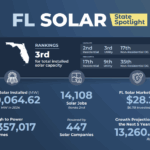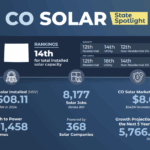
If you’re considering installing solar panels on your home, now is the perfect time. The price of solar panels has dropped 80 percent since 2011, according to PV Magazine. Other sources agree with the price decrease, stating solar panel costs have dropped nearly 70% since 2012. Additional incentives will save you money in the long run.
With all the promotion solar power has been getting, most homeowners have at least heard about how cost-effective installing solar panels will be, but not the specifics of HOW it will deliver on that promise.
Table of Contents
To help fill in the blanks, here are the ways installing solar on your home will save you money:
1. Investment Tax Credit
Tax credits and incentives for solar energy are designed to encourage homeowners and businesses to invest in solar systems by reducing the overall cost. These incentives can vary greatly depending on your location and the specific policies in place. Here’s a general overview:
Federal Solar Investment Tax Credit (IRA): This is a significant incentive in the United States. The ITC allows you to deduct a certain percentage of the cost of installing a solar energy system from your federal taxes. As of now, the IRA was set at 30% for solar PV systems installed.
State and Local Incentives: Many states, cities, and utilities offer their incentives for solar energy. These can include additional tax credits, cash rebates, and solar renewable energy certificates (SRECs). SRECs are earned for your system’s electricity and can be sold to utility companies, providing additional income.
Property Tax Exemptions: Some regions offer property tax exemptions for the added value that a solar system brings to your home. This means you won’t pay additional property taxes on the increased value of your home due to the solar panels.
2. Increase in home value
Installing solar panels on your home increases its value. For example, homes in states like California appreciate when they have solar power features at 10 percent higher than homes without. If you want to buy a home with solar panels installed, expect to pay less over the long run in energy costs, plus any tax credits and rebate programs.
According to a U.S. Department of Energy’s Lawrence Berkeley Laboratory report, host-owned solar energy systems typically add $15,000 to a home’s value.
In this study, a team analyzed almost 22,000 home sales in eight states from 1999 to 2013 — producing authoritative estimates of price premiums for U.S. homes with solar panel systems.
3. Reduced electricity cost
This is perhaps the most immediate way homeowners save money. For most homeowners, the electricity bill is one of the highest costs monthly. Which is why lowering—or in some cases eliminating—electricity costs is so attractive.
How it works: Solar panels buffer you from the ever-increasing energy bills that go up every year. The more they go up, the more you save. Increases in electric rates have grown between 2.5% and 7% per year over the past two decades.
Solar installation also makes your electric bill consistent. Electric bills typically go up and down monthly, depending on usage, time of year, etc. With solar energy, bills will remain constant throughout the year.
The key to finding out how much you’ll save is to check in your state through solar energy resources that can give you the specifics. For example, research shows that Massachusetts is one of the easiest states to get and switch to solar energy. Most people would not have thought of the New England state that made headlines for having one of the worst winters in the country as a prime location for solar power, but it is.
Electricity, on average, costs Massachusetts residents about .17/kwh, which is slightly higher than average when you compare energy rates to the rest of the country. On average, homeowners have seen savings of up to $18,763 over 25 years (the life of the solar panels).
4. Net Energy Metering
Net metering is a billing mechanism that credits solar energy system owners for the electricity they add to the grid. It allows residential and commercial customers who generate their electricity using solar panels to feed excess energy back into the grid when producing more electricity than they need.
How Does Net Metering Work?
Excess Energy Production: During the day, especially on sunny days, solar panels produce more electricity than a home can use. This extra energy is sent back to the power grid.
Energy Credits: When this happens, the homeowner’s electricity meter runs backward, providing a credit against the energy consumed at night or on cloudy days when the panels produce less electricity than needed.
Balancing Consumption and Production: Over a billing cycle, the homeowner only pays for the net electricity used – the difference between the energy produced by the solar panels and the energy consumed from the grid.
Monthly Statements: If you produce more electricity than you use over the billing period, the surplus energy credits can be carried over to offset future bills. In some cases, if you have a significant surplus, the utility company may pay you for this excess electricity.
To learn how much you would save overall, talk to a local installer, check out your state’s tax incentives program, and consult your tax advisor.


